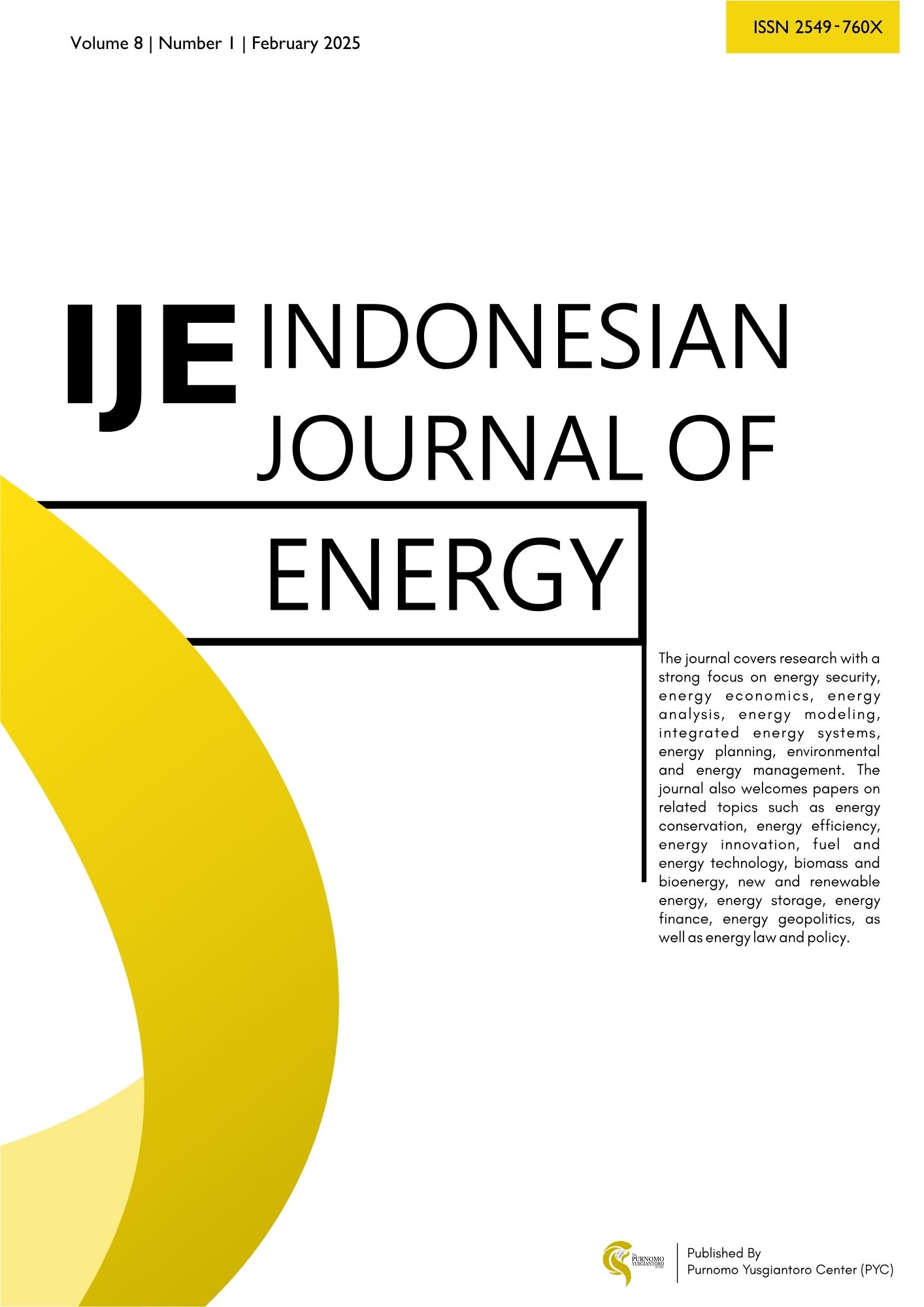Illuminating Energy Efficiency
Satellite-Guided Insights for Optimizing Urban Street Lighting Across Indonesian Cities
Abstract
This study introduces a ground-breaking method for enhancing urban energy management by integrating high-resolution night-time satellite imagery from SDGSAT-1 with detailed ground-truth verification of street lighting across major cities in Central Java and DIY. Utilizing the Glimmer Imager for Urbanization (GIU) with 10-meter resolution, this research precisely identifies different urban street lamp types and evaluates their impact on energy consumption. As the demand for public street lighting grows with urban expansion, there is a pressing need for efficient energy management to sustain urban development and reduce environmental footprints. This study focuses on Semarang, Yogyakarta, and Solo, aiming to assess energy efficiency by examining how different street lighting affects energy usage across various road network types. By employing pan sharpening techniques to enhance image resolution and zonal statistics for in-depth analysis, the research finds significant correlations, especially in the red spectral band. This correlation suggests the potential of using SDGSAT-1 data to estimate streetlight energy consumption where direct measurements are unavailable. The findings also reveal significant variations in energy consumption across different road types, attributed to varying traffic and lighting needs. By highlighting these disparities, the study underscores the potential of transitioning to LED lighting, which can reduce energy consumption by up to 69%. This research not only demonstrates the capabilities of satellite imagery in urban energy management but also offers practical insights for cities looking to improve lighting efficiency, reduce costs, and promote sustainability in urban planning.
Downloads
References
Arellano, B., & Roca, J. (2020). The extraction of urbanized areas through images of high resolution nighttime lights. The International Archives of the Photogrammetry, Remote Sensing and Spatial Information Sciences, XLIII-B3-2020, 649–655. https://doi.org/10.5194/isprs-archives-XLIII-B3-2020-649-2020
Casamayor, J., Su, D., & Sarshar, M. (2015). Extending the lifespan of LED-lighting products. Architectural Engineering and Design Management, 11(2), 105–122. https://doi.org/10.1080/17452007.2013.834813
Cheng, B., Chen, Z., Yu, B., Li, Q., Wang, C., Li, B., Wu, B., Li, Y., & Wu, J. (2020). Automated extraction of street lights from JL1-3b nighttime light data and assessment of their solar energy potential. IEEE Journal of Selected Topics in Applied Earth Observations and Remote Sensing, 13, 675–684. https://doi.org/10.1109/JSTARS.2020.2971266
Curran, J. W., & Keeney, S. P. (2006). Replacement of fluorescent lamps with high-brightness LEDs in a bridge lighting application (I. T. Ferguson, N. Narendran, T. Taguchi, & I. E. Ashdown, Eds.; p. 633719). https://doi.org/10.1117/12.682727
de Meester, J., & Storch, T. (2020). Optimized performance parameters for nighttime multispectral satellite imagery to analyze lightings in urban areas. Sensors, 20(11), 3313. https://doi.org/10.3390/s20113313
Elvidge, C. D., Keith, D. M., Tuttle, B. T., & Baugh, K. E. (2010). Spectral identification of lighting type and character. Sensors, 10(4), 3961–3988. https://doi.org/10.3390/s100403961
Ergüzel, A. T. (2019). A study on the implementation of dimmable street lighting according to vehicle traffic density. Optik, 184, 142–152. https://doi.org/10.1016/j.ijleo.2018.12.183
González-Audícana, M., Otazu, X., Fors, O., & Alvarez-Mozos, J. (2006). A low computational-cost method to fuse IKONOS images using the spectral response function of its sensors. IEEE Transactions on Geoscience and Remote Sensing, 44(6), 1683–1690. https://doi.org/10.1109/TGRS.2005.863299
Guittet, M. (2012). Management of urban energy systems. In Network Industries Quarterly | (Vol. 14). http://www.revedavenir.org/
Itasari, M., Samman, F. A., & Salam, A. E. U. (2023). Comparative study of the interconnected street light luminance levels control for energy efficiency. ICMSA.
Jain, R. (2021). The Urban Transformation: issues and challenges. In urban growth and environmental issues in India (pp. 17–34). Springer Singapore. https://doi.org/10.1007/978-981-16-4273-9_2
Khade, D. R., Gajane, N. V., Gawade, S. N., & Metri, R. A. (2017). Intensity controller of LED street lights. 2017 International Conference on Circuit ,Power and Computing Technologies (ICCPCT), 1–4. https://doi.org/10.1109/ICCPCT.2017.8074171
Kostic, M., & Djokic, L. (2009). Recommendations for energy efficient and visually acceptable street lighting. Energy, 34(10), 1565–1572. https://doi.org/https://doi.org/10.1016/j.energy.2009.06.056
Kurniawan, I. W., & Kurniawan, R. (2022). Fostering energy efficiency through street lighting system improvement: a case study of city-level in indonesia. Indonesian Journal of Energy, 5(2). https://doi.org/10.33116/ije.v5i2.146
Li, H., Jing, L., Dou, C., & Ding, H. (2024). A comprehensive assessment of the pan-sharpening of the nighttime light imagery of the glimmer imager of the sustainable development science satellite 1. Remote Sensing, 16(2), 245. https://doi.org/10.3390/rs16020245
Masara, V. M. (2019). The replacement of tradiocional lamps by LED in Brazil: a case of environmental and economic sustainability (short review). MOJ Civil Engineering, 5(1), 31–33. https://doi.org/10.15406/mojce.2019.05.00146
Mohamed, R. R., Mohamed, M. A., Ahmad, A., & Abd Halim, M. A. H. (2018). Provisioning of street lighting based on ambience intensity for smart city. Indonesian Journal of Electrical Engineering and Computer Science, 12(3), 1401. https://doi.org/10.11591/ijeecs.v12.i3.pp1401-1406
Morrow, E. N., Hutton, S. A., Ryan, G. H., Bensinger, P. B., & Kane, C. M. (2000). The Chicago Alley Lighting Project: Final Evaluation Report Prepared by.
Ozadowicz, A., & Grela, J. (2014). The street lighting integrated system case study, control scenarios, energy efficiency. Proceedings of the 2014 IEEE Emerging Technology and Factory Automation (ETFA), 1–4. https://doi.org/10.1109/ETFA.2014.7005345
Radulovic, D., Skok, S., & Kirincic, V. (2011). Energy efficiency public lighting management in the cities. Energy, 36(4), 1908–1915. https://doi.org/10.1016/j.energy.2010.10.016
Srivatsa, D. K., Preethi, B., Parinitha, R., Sumana, G., & Kumar, A. (2013). Smart street lights. 2013 Texas Instruments India Educators’ Conference, 103–106. https://doi.org/10.1109/TIIEC.2013.25
van Bommel, W. (2015). Purpose and benefits of road lighting. In Road Lighting (pp. 3–6). Springer International Publishing. https://doi.org/10.1007/978-3-319-11466-8_1
Vidyarthi, A., Coxon, S., Napper, R., & Gusheh, M. (2023). A proposed hierarchy of smart roads: assisting future technological developments (pp. 455–466). https://doi.org/10.1007/978-981-99-0264-4_38
Wojnicki, I., & Kotulski, L. (2018). Empirical study of how traffic intensity detector parameters influence dynamic street lighting energy consumption: a case study in Krakow, Poland. Sustainability, 10(4), 1221. https://doi.org/10.3390/su10041221
Yin, Z., Chen, F., Dou, C., Wu, M., Niu, Z., Wang, L., & Xu, S. (2024). Identification of illumination source types using nighttime light images from SDGSAT-1. International Journal of Digital Earth, 17(1). https://doi.org/10.1080/17538947.2023.2297013
Zhao, Z., Qiu, S., Chen, F., Chen, Y., Qian, Y., Cui, H., Zhang, Y., Khoramshahi, E., & Qiu, Y. (2023). Vessel detection with SDGSAT-1 nighttime light images. Remote Sensing, 15(17), 4354. https://doi.org/10.3390/rs15174354
















